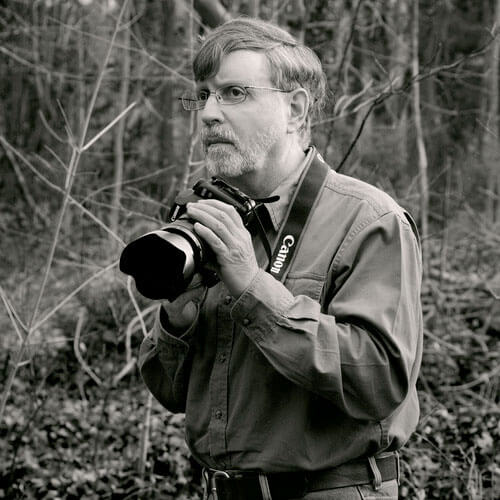Alan Henriksen was born in 1949 in Richmond Hill, Queens, New York, and has lived his entire life on Long Island. He became interested in photography as a hobby in 1958, and began making contact prints in late 1959. His interest became serious following a chance discovery of the work of Edward Weston and Ansel Adams at the local library. Henriksen holds college degrees in Psychology and Computer Science and is now retired from a long career in software engineering. Beginning in the mid-1970?s he worked for nearly ten years at Agfa-Gevaert’s photo paper manufacturing plant on Long Island as a sensitometrist and software engineer. In the late 1980?s he authored a Zone System software program named ZoneCalc, which was marketed by the Maine Photographic Resource. In 1968 he and his wife Mary made their first visit to the Maine coast, starting a photographic project that continues to this day. They now divide their time between their homes in Smithtown, Long Island and Southwest Harbor, Maine.
All about Alan Henriksen:AAP: When did you realize you wanted to be a photographer?Although I had already been photographing as a hobbyist for six years, my interest became more serious in 1964 when, during a library visit, I chanced upon Peter Pollack's book, "A Picture History of Photography," and opened it to the section devoted to the work of Edward Weston.
AAP: Where did you study photography?My formal photographic education was limited to the 1970 Ansel Adams Workshop in Yosemite National Park.
AAP:Do you have a mentor?In 1967 I composed a letter and sent it, along with some prints, to Ansel Adams in Carmel. Toward the close of his two-page single-spaced typewritten reply he wrote, "I want to follow your work and see more of your prints." This began a correspondence, soon supplemented with phone calls, that lasted until 1970, at which time I attended his Ansel Adams Workshop in Yosemite National Park.
AAP: How long have you been a photographer?I began photographing in 1958, purely as a hobby, and began printing in 1959.
AAP: Do you remember your first shot? What was it?The first photograph I remember taking was made in 1958. I photographed my neighbor while she was leaning into a baby carriage to tend to her child.
AAP: What or who inspires you?I do not believe in inspiration; I believe in simply working, and working simply. When photographing, my ideas arise directly from my exploration of the subject matter at hand. But I cannot say why I find a certain bit of the world, seen from just such an angle, in a certain light, interesting.
AAP: How could you describe your style?I do not consciously try to apply a style to my photographs. I believe in the maxim, "Style does not precede; it results." Although there is a kind of consistency to my photographs over the years, and more so during any particular period, that is presumably because I have remained roughly the same person.
AAP: What kind of gear do you use? Camera, lens, digital, film?I currently work with a Canon 5D Mark II and various Canon lenses.
AAP: Do you spend a lot of time editing your images?I take an iterative approach to image editing, generally performing several editing passes. I like to leave some time between each pass in order to help me see the image with fresh eyes during each session. I consider an image completed (for the time being) when I view the image and it seems to "work" as is. For some images the editing process is completed within a few sessions, while others take much longer.
